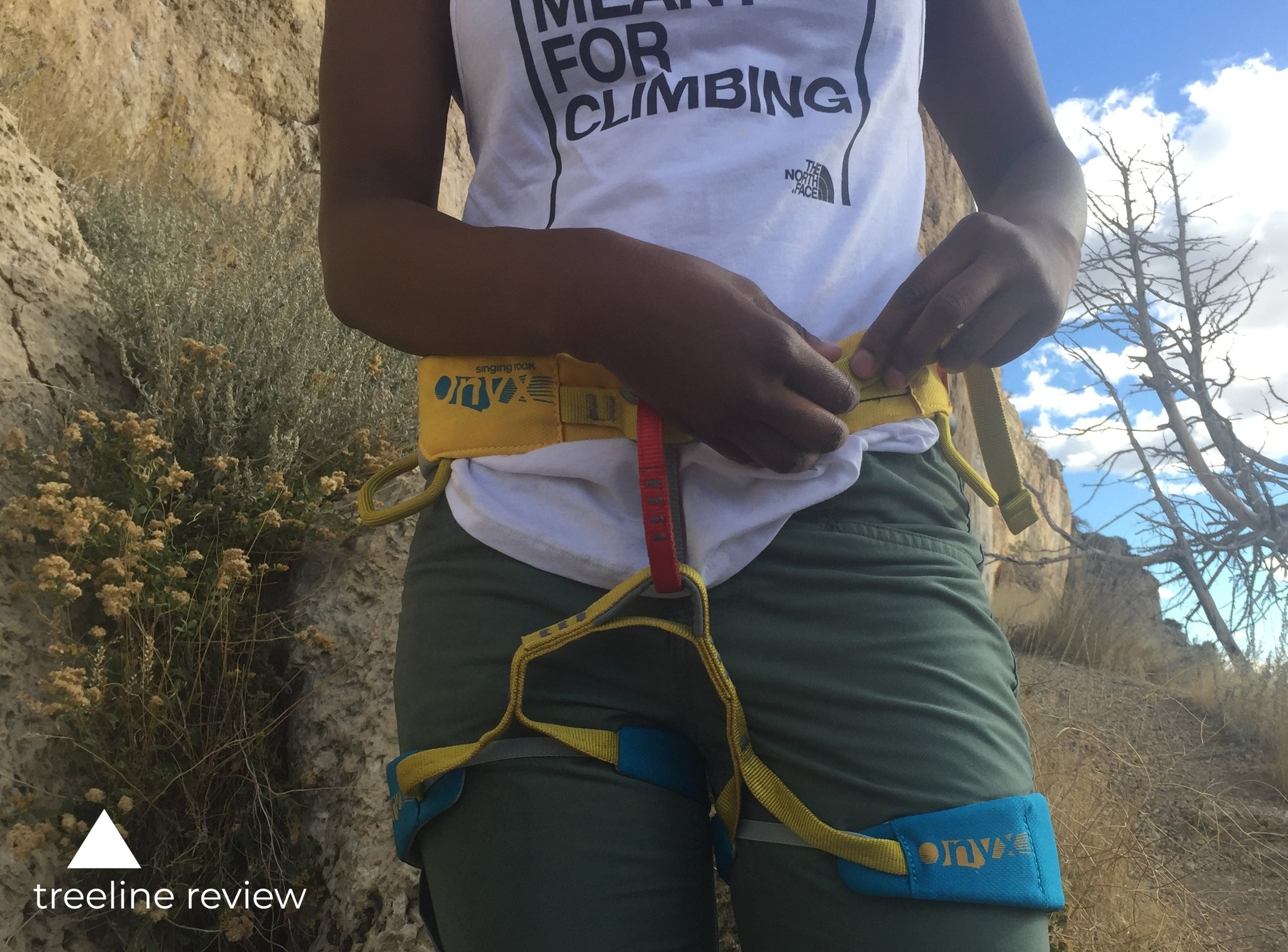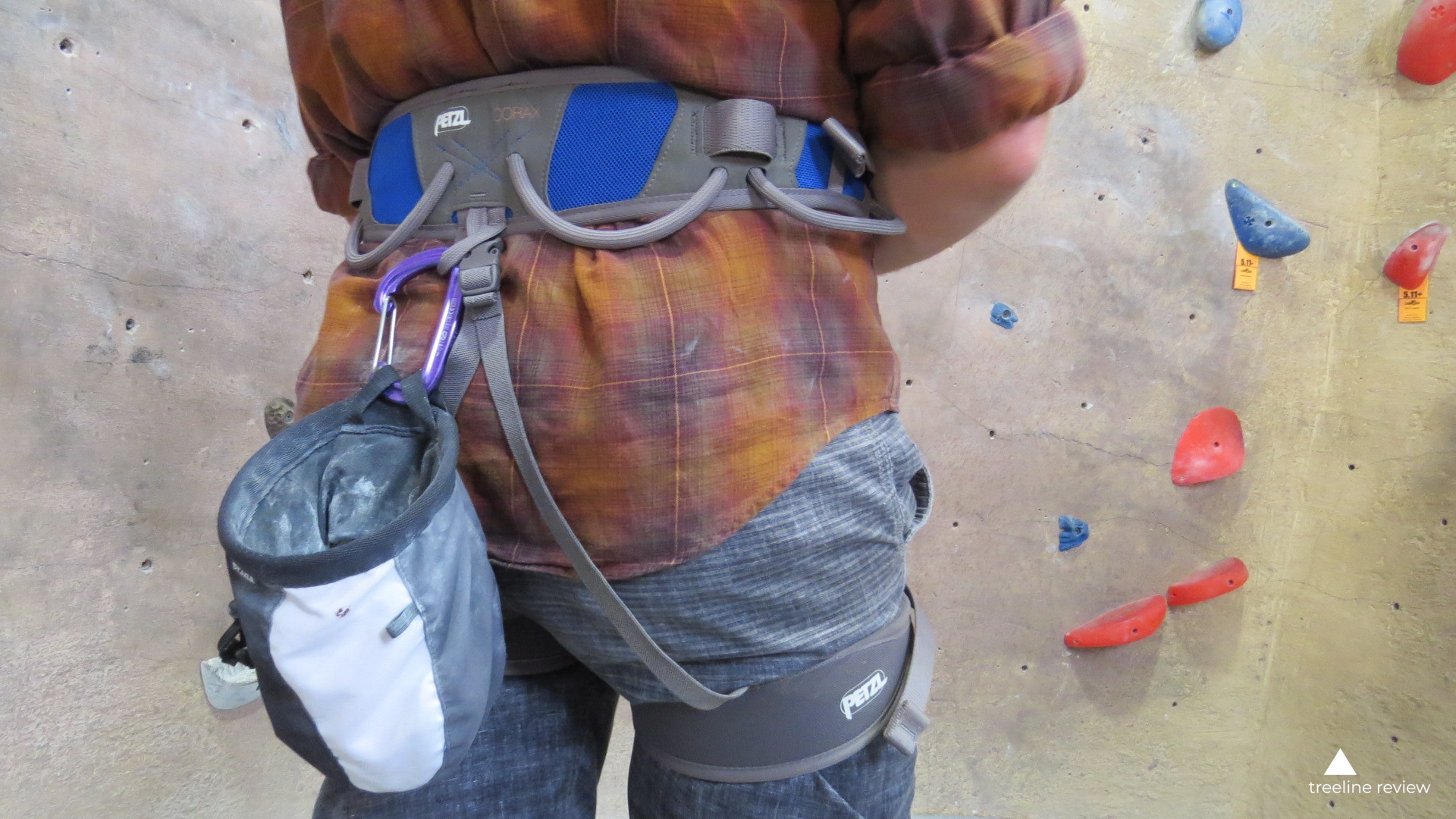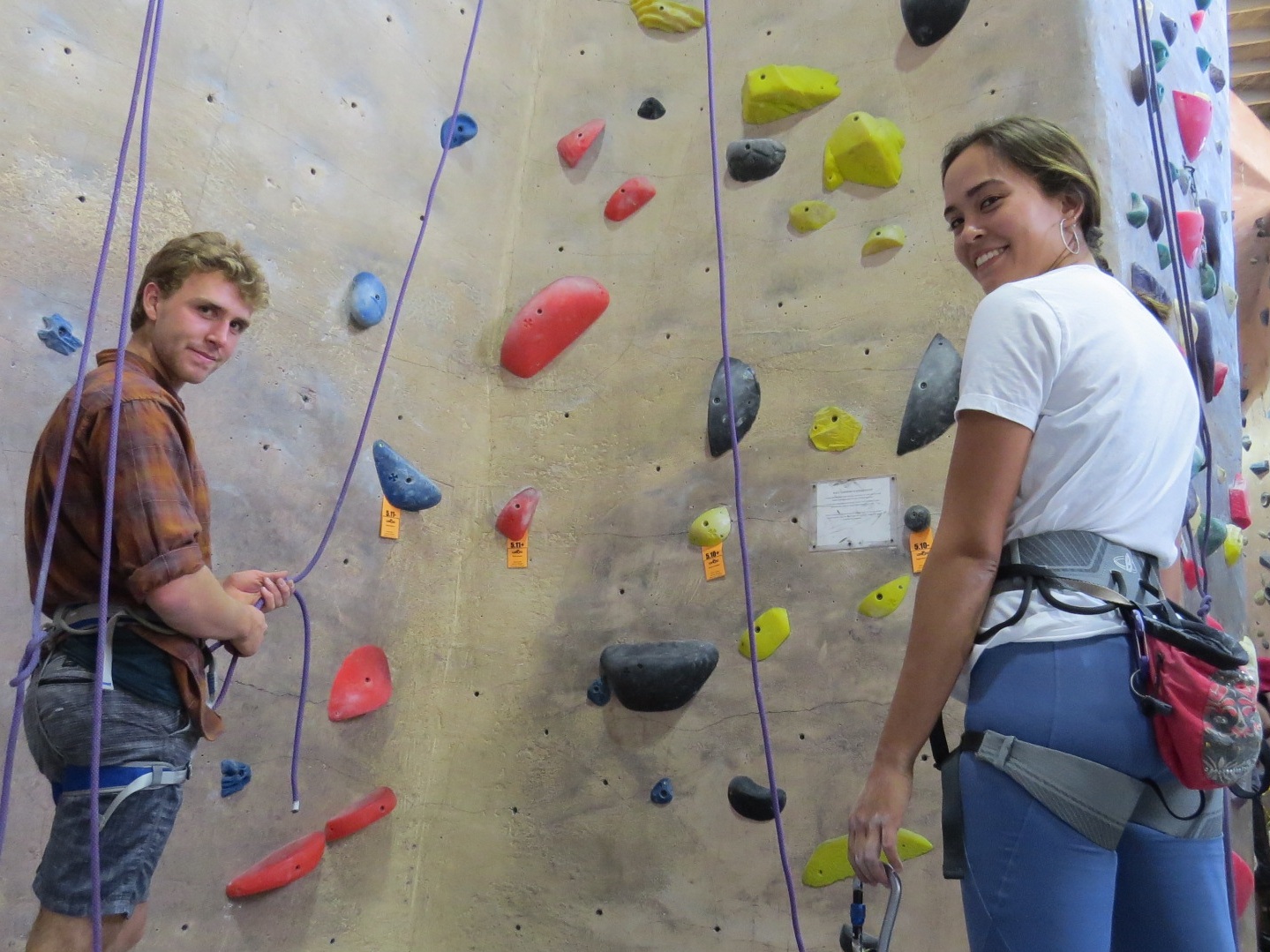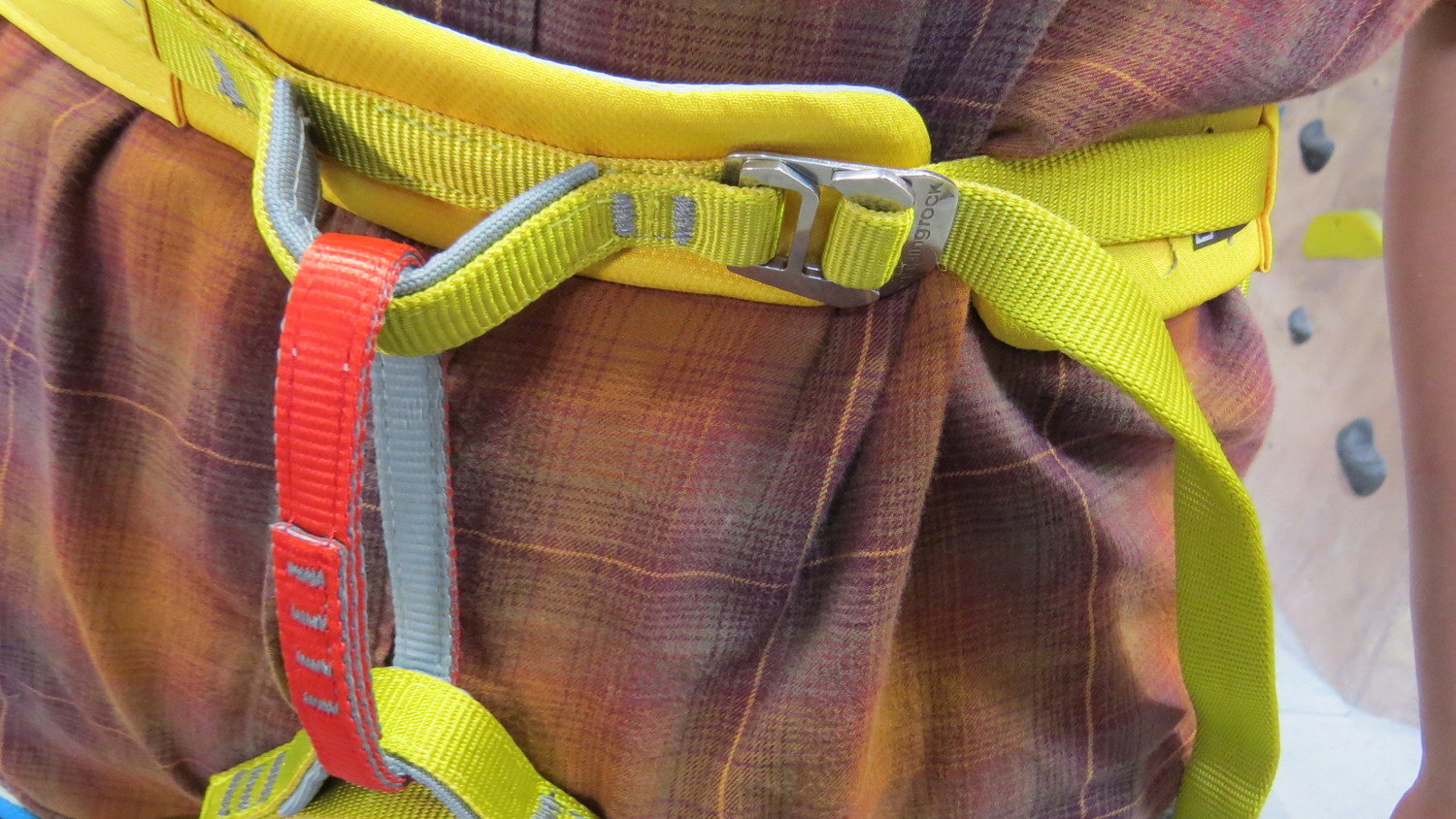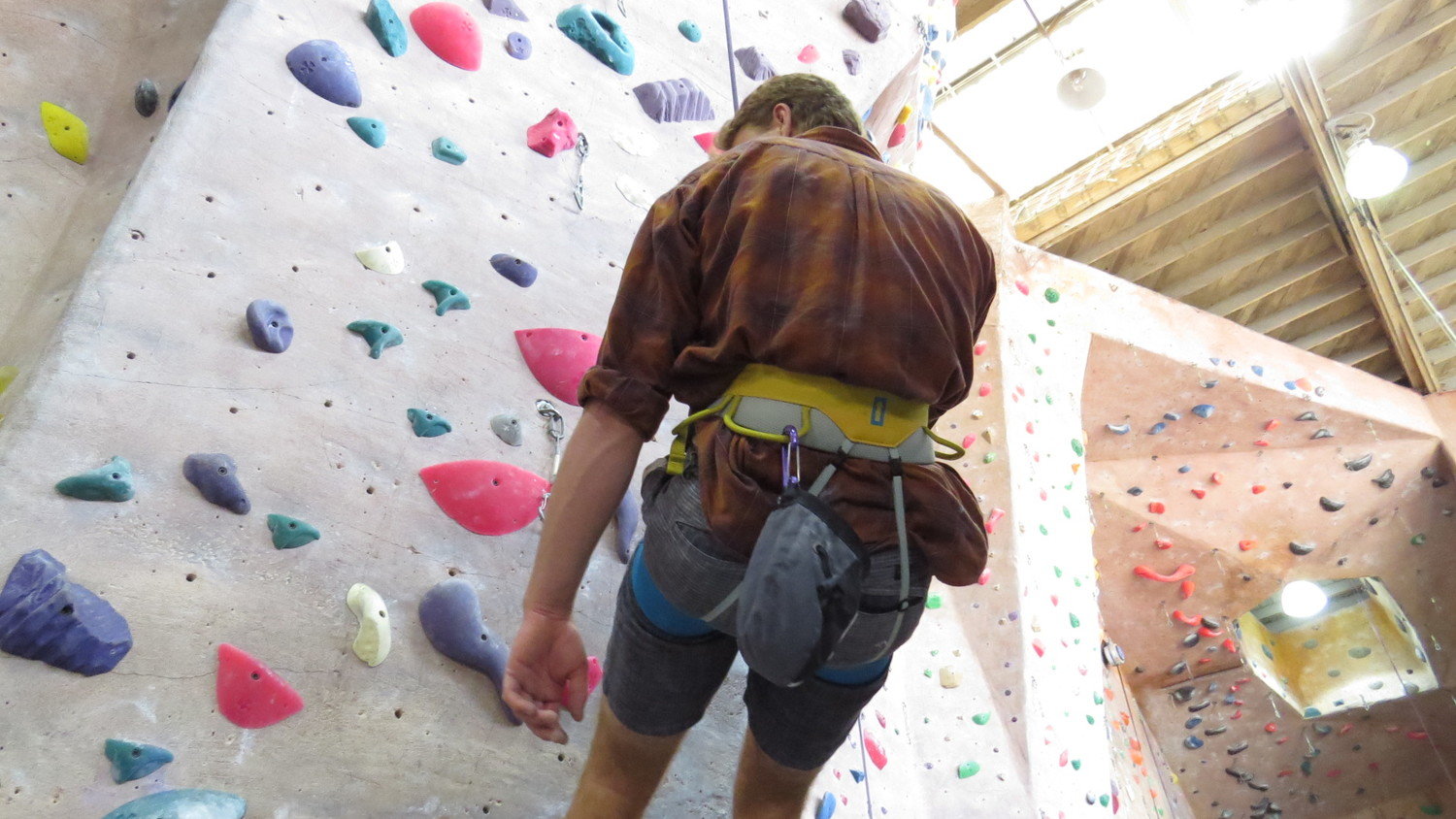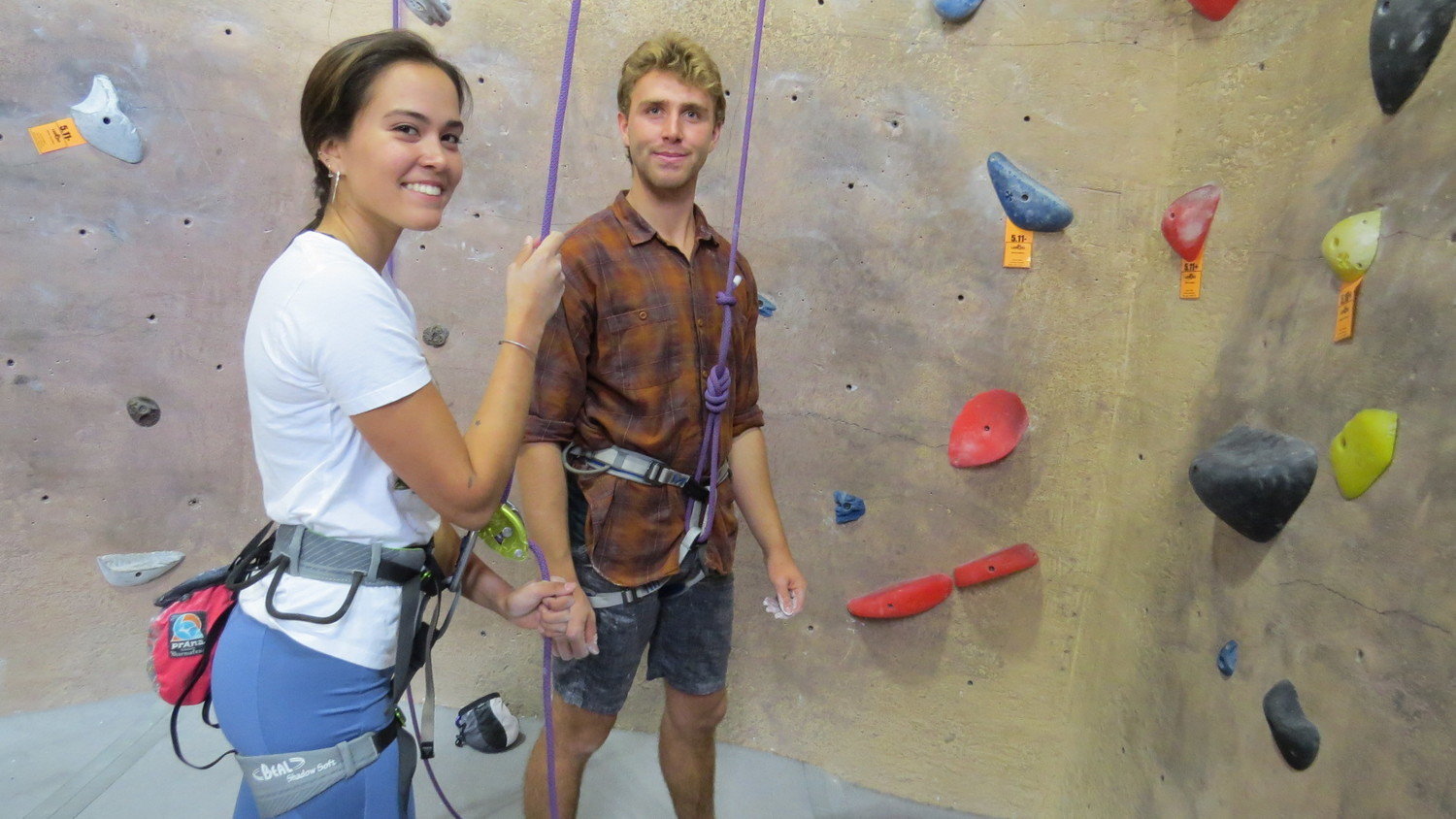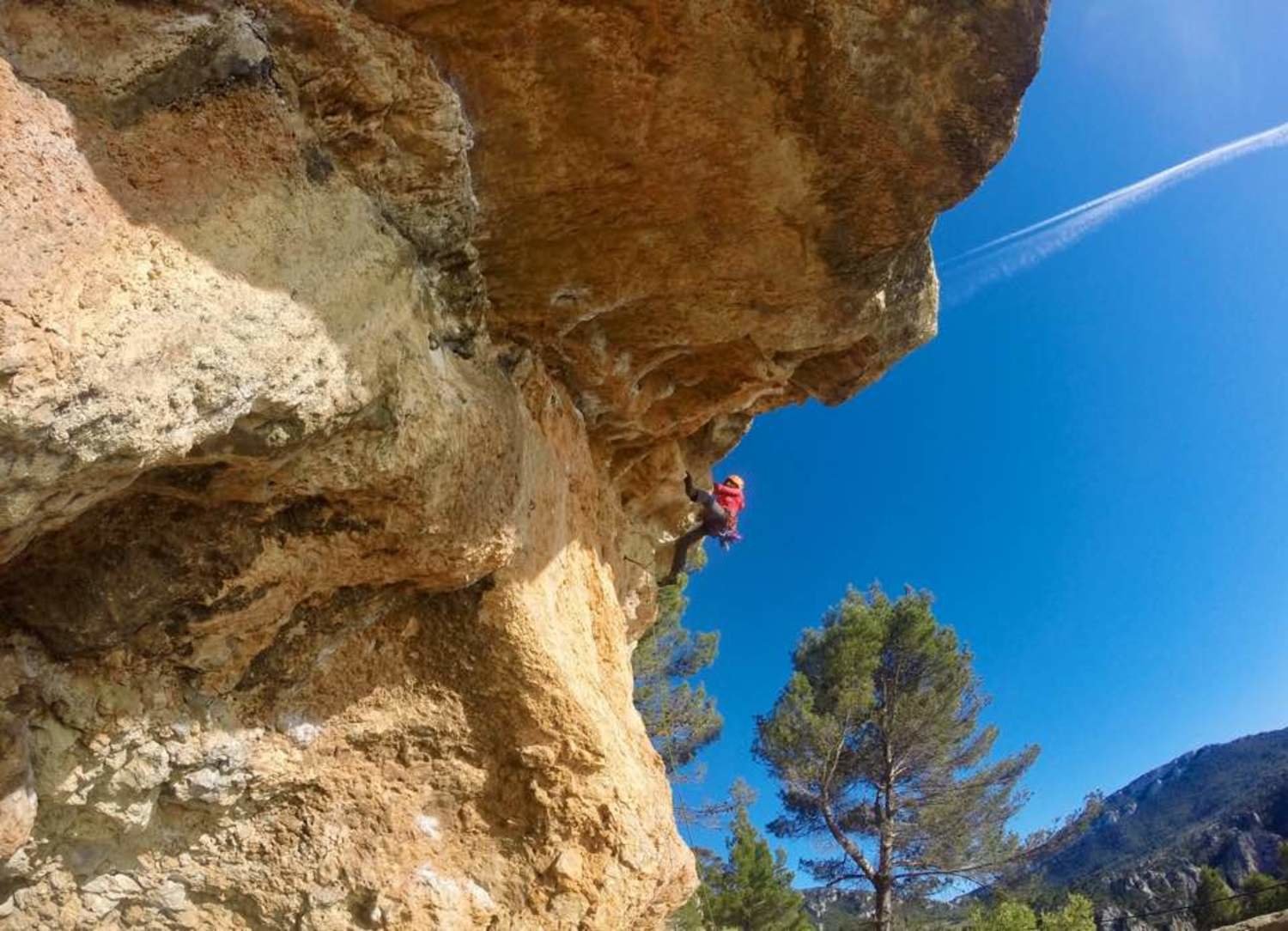The Best Climbing Harnesses
The Top-Rated Climbing Harnesses for Beginners, Women, Sport and Trad
To find the best climbing harnesses for entry-level climbers, we tested seven popular beginner rock climbing harnesses with advanced and early level rock climbers. Based on the criteria of comfort, versatility and price, we identified 3 of the best climbing harnesses for people getting into rock climbing.
The Singing Rock Onyx comes out on top for its price, comfort, and beginner-friendly features. Petzl’s Corax costs more than the Onyx but rated higher among our testers and customer reviews as a beginner-friendly harness. The Petzl Selena harness provides a simple and cost effective harness for those with smaller bodies who are new to the sport.
We create reader-supported, objective gear reviews independently selected by our editors. This story may contain affiliate links, which help fund our website. When you click on the links to purchase gear, we may get a commission, without costing you an extra cent. Thank you for supporting our work and mission of outdoor coverage for every body! Learn more.
The Best Climbing Harness
Singing Rock Onyx
the most versatile climbing harness
Petzl Corax
the best harness for smaller bodies
Petzl Selena
Comparison Table
| Climbing Harness | Award | MSRP | Weight (oz) | Sizes | Gear Loops | Adjustable Leg Loops? | Best Use |
|---|---|---|---|---|---|---|---|
| Singing Rock Onyx | Best Overall | $50 | 11.8 | XS-XL | 4 | N | Sport climbing |
| Petzl Corax | Most Versatile | $60 | 19 | 1 & 2 | 4 | Y | Rock, ice, alpine, or via ferrata |
| Petzl Selena | Best Women's | $70 | 15 | XS-L | 4 | N | Sport climbing |
| Misty Mountain Volt | $85 | 12.9 | XS-L | 4 | N | Single pitch trad | |
| Mad Rock Mars | $55 | 19.2 | XS-XL | 4 | Y | Gym, sport, trad | |
| Metolius All Around | $120 | 19 | XS-XL | 4 | Y | All around | |
| Black Diamond Momentum | $60 | 10.6 | XS-XL | 4 | Y | Gym | |
| Beal Shadow Soft | $70 | 14.5 | XS-XL | 4 | Y | All around |
WHAT’S AN ENTRY-LEVEL CLIMBING HARNESS?
As a climber, you spend a lot of time in your harness. You sit in it while you’re belaying, figuring out your next move, and while rappelling. Finding a climbing harness that fits your body is key to an enjoyable experience.
As a beginner, simplicity is your friend. Choosing a simple and versatile harness allows room to try various climbing styles.
As someone getting into climbing, you'll save money by choosing a sport climbing harness. Sport climbing is a type of climbing the doesn't require you to carry or own as much gear. Sport climbing is how most folks get into climbing and is the most common form of roped climbing in climbing gyms.
As you advance as a climber and take on other forms of climbing, some features you might want to think about when choosing a climbing harness are. Some examples are:
a lightweight harness
gear storage capacity (especially if you get into trad climbing)
whether the harness can hold tools, like ice axes (if you decide to get into mountaineering, ice climbing, or alpine climbing).
Depending on what type of climbing you get into, you may find that you'll want a mountaineering harness or traditional harness, but starting with a sport climbing harness keeps your initial cost down as you explore).
Choosing to buy your own climbing gear is a big deal, one we intend to simplify for you. As you know by now from walking down the aisle of your favorite gear store, there are a lot of shiny things out there.
You’ll likely move on from your first climbing harness in a year or two as you understand more about what kind of climbing you enjoy and your own climbing style. It’s easier to upgrade to the right kind of harness for you if you didn’t spend a lot of money on your first harness.
The omitting of gender specifications was intentional. Bodies have different needs that aren't based on gender. Throughout the guide, I do speak to specifics around padding, buckles and fit to inform people about the fit. I also note when a particular climbing harness model has options for smaller or larger bodied people.
Related: The Best Sports Detergent
The author climbing in the Wind River Range, Wyoming. Photo courtesy Grace Anderson
HOW WE RESEARCHED
To research the best climbing harnesses for beginners, we read reviews from Alpinist, Outdoor Gear Lab, Gear Institute, Weigh My Rack, Epic TV, Adventure Junkies, Splitter Choss, and Rock and Ice (see Sources). Many of these reviews are focused on gear for folks that have been climbing for a while, so we used our own judgment to find harnesses that best serve people who are looking for a solid first harness.
We also scanned dozens of reviews from real customers at REI, Amazon, and Backcountry. To find out the legitimacy of customer reviews, we ran each listing through FakeSpot, a website that scans reviews for signs of fraud. We also used these reviews to determine what criteria is important for a beginner rock climber.
I also used my own experience as a climber and climbing educator. I was a field instructor for the National Outdoor Leadership School (NOLS) and for GirlVentures, an organization that empowers adolescent girls to develop and express their strengths through outdoor adventures. Before that, I was program manager for Sierra Club Outdoors’ Inspiring Connections Outdoors Program to connect communities with limited access to the outdoors. I’ve been featured as an athlete and instructor in the Alpinist, Melanin Basecamp, and was chosen by Gear Junkie as a 30 under 30.
I hold a Top Rope Instructor Certification with the Professional Climbing Instructors Association and a Single Pitch Instructor Certification with the American Mountain Guides Association as part of a Women’s Single Pitch Instructor program led by the American Alpine Club, Flash Foxy (a women’s climbing community), Brown Girls Climb, Camber Outdoors, and The Mountain Guides. My climbing education also includes seminars with NOLS and GirlVentures.
I started climbing eight years ago when I first moved to Lander, WY. While in Lander, I often joined along when other folks went out climbing. It was after moving to Oakland, CA and working for GirlVentures that I developed a desire to learn the skills needed to be a self sufficient climber. A lot of what I learned was from friends taking me out and watching as they did things.
Something that has always helped quell my fear with climbing is knowing my systems and gear well. Knowing how and why equipment works gives me confidence in my climbing.
The number of climbing harnesses available can be overwhelming. Photo by Liz Thomas
HOW WE TESTED
To test the harnesses, I asked friends and my partner to go out climbing with me. The folks who tested the harnesses ranged from beginners to more seasoned climbers. One of the huge advantages of living in Lander is its proximity to Sinks Canyon State Park where there are more than 1,000 routes on limestone cliffs.
After climbing in the harnesses, I asked testers specific questions about the fit, comfort and features of the harness that stood out to them while on the wall.
As many beginners start at the climbing gym, we also had multiple climbers test these harnesses indoors at gyms in Southern California.
Are you a climber? Check out our other Rock Climbing guides:
We tested 7 harnesses to find the best climbing harness for beginners. Photo by Liz Thomas
how to choose a climbing harness
All harnesses have the following features. It’s important to know them before purchasing your first climbing harness. We
The bright yellow waist belt and red belay loop of the Singing Rock Onyx. Photo by Liz Thomas.
WAIST BELT
The waistbelt fits around the waist and is adjustable based on desired fit. You want your waistbelt to sit on your hip bones and to have thick enough padding to keep you comfortable. REI gives good advice on how a climbing harness should fit and how to put it on correctly.
BUCKLE
Located on the waistbelt, the buckle contains one to two metal pieces that double back through the harness. This metal piece provides the adjustment and closure of the waistbelt.
LEG LOOP
These two loops support your legs while in the harness. A good leg loop is well padded and has some elasticity for comfort.
If you’re worried about the fit of a leg loop on your thighs, I suggest looking for harnesses that allow with adjustable leg loops (vs. leg loops that “adjust” by being stretchy). As someone getting into climbing, you are less likely to be doing to find yourself in a hanging belay, or other situations where you'll be putting your full weight into the harness. Still, your leg loops should feel comfortable.
BELAY LOOP
Located at the front of the harness, the belay loop is the strongest piece of the harness. There aren’t many variations of belay loops to influence a preference.
GEAR LOOP
Gear loops are located around the waist belt. They are a space to carry your climbing gear (chalk bag, quickdraws, etc.).
It's important to become familiar with the parts of your harness and their functions before climbing, even if you won’t necessarily use them as a beginning climber.
A gear loop is used for carrying gear items. A haul loop is for carrying a second climbing rope on long climbs. Similarly, a rear haul loop is usually sewn in on the back of the harness and is designed to handle the weight of a rope. Make sure to check which type of loop(s) your harness has and their weight-carrying capacity before climbing.
Early in your climbing career, you’ll unlikely to need a haul loop or rear loop. But you will likely want a gear loop. Each loop has a different function and weight-bearing load. This diagram by REI details the different parts of a harness, including the gear loop and haul loop, which can sometimes look similar.
Gear loops can be used to store gear like quickdraws. Photo by Liz Thomas.
LEG LOOP
These two loops support your legs while in the harness. A good leg loop is well padded and has some elasticity for comfort.
If you’re worried about the fit of a leg loop on your thighs, I suggest looking for harnesses that allow with adjustable leg loops (vs. leg loops that “adjust” by being stretchy). As someone getting into climbing, you are less likely to be doing to find yourself in a hanging belay, or other situations where you'll be putting your full weight into the harness. Still, your leg loops should feel comfortable.
BELAY LOOP
Located at the front of the harness, the belay loop is the strongest piece of the harness. There aren’t many variations of belay loops to influence a preference.
GEAR LOOP
Gear loops are located around the waist belt. They are a space to carry your climbing gear (chalk bag, quickdraws, etc.).
As a beginner climber, a gear loop isn't the most important feature of your harness. Still, It's important to become familiar with the parts and their functions before climbing.
This diagram by REI details the different parts of a harness, including the gear loop and haul loop (which are used for carrying up a second climbing rope on long climbs). While the haul loop may generally be used more by advanced climbers, as a beginning climber, you will likely use the gear loop early from the start. (A rear loop isn't usually sewn in or designed to take as much weight as a rear haul loop, so make sure to check which type your harness has before climbing).
The Best Climbing Harnesses
A front view of the Singing Rock Onyx, our top pick. Our testers took it outdoors in Sinks Canyon State Park, Wyoming. Photo courtesy Grace Anderson
THE BEST BEGINNER HARNESS: Singing Rock Onyx
The Singing Rock Onyx harness is the Best Beginner Harness for its easy-to-use features and comfort all for an entry-level price. All its features make it beginner friendly, starting with its color.
Why? When you’re learning to climb, the different parts of a harness can sometimes be confusing. With a bright yellow waist belt, blue leg loops, and red belay loop, it’s easy to identify the parts of the harness.
An upwards-pointing arrow on the back of the harness belt makes it easier to tell which way is up. This is important when you are learning to put on a harness.
The upwards pointing arrow on the back of the Singing Rock Onyx makes it easier for you to know how to put on your harness. The padded waist belt and blue=colored leg loops makes it comfortable to wear Photo by Liz Thomas.
The padded waist belt and padded leg loops offer comfort when sitting in the harness for long periods of time. To keep prices down and stay beginner-friendly, the Onyx uses a fixed leg loop system, so aren’t adjustable. But they do have a stretchy material to allow for better movement.
Weighing only 12 oz., the Onyx is a surprisingly lightweight harness. This makes it easy to pack and carry to the crag. It tied with the Misty Mountain Volt for the lightest harness we tested.
I wore this harness out on a day of climbing in Sinks Canyon State Park in Wyoming. While I didn’t do a lot of sitting in this sport harness, the waist and leg loops provided comfort for moving around on the wall. I didn’t have a lot of gear on the harness while climbing. Unlike some harnesses we tested, I found the Onyx was very easy to take on and off.
The Singing Rock Onyx being testing on a rock climbing wall indoors. Photo by Liz Thomas.
We also analyzed customer reviews on REI, Backcountry.com, and other big retailers (sadly, many who no longer carry the smaller company’s gear). Customers agreed that the Singing Rock Onyx is “crazy comfortable” and “not too bulky.”
Among professional gear reviewers (see Sources), Outdoor Gear Lab found that the Onyx to be "great value for sport and trad climbing harness." Splitter Choss' review of the harness found that “a great multi-style harness.” They added that “if you want a quiver-of-one harness, this is worth taking a look at.”
The one downside about the Singing Rock Onyx is that is isn’t always the easiest to find. Singing Rock is a Czech climbing company that has a smaller presence in the US compared to some of the bigger brands. Still, we think the color-coded design on the Onyx is worth the extra effort.
The beginner friendly features of the Singing Rock Onyx elevated this harness to the top of the list. That in hand with the comfort, versatility and low price point make the Singing Rock Onyx an excellent option for getting into climbing.
COMPARE PRICES ON THE SINGING ROCK ONYX
The Petzl Corax is our pick for most versatile harness. Photo by Liz Thomas.
MOST VERSATILE HARNESS:
PETZL CORAX
The Petzl Corax emerged as the most versatile of the seven harnesses we tested. This harness makes it a breeze to climb across styles like sport climbing, multi-pitch climbing, or traditional (aka, trad climbing).
Th Petzl Corax is the most comfortable harness we tested. One of the notable features of the Petzl Corax is that it is a highly adjustable harness. You can adjust it from either side with two buckles.
The adjustable waist belt, along with adjustable leg loops allows for the most comfort when climbing. Thick padding on the waist and leg loops allows for the climber to be comfortable even after a long day outside or in the gym. It was also easy to take this harness on and off. However, one complaint a woman-identifying tester had is that the size Small on the Corax was too big to feel entirely safe on a smaller body.
Adjustable leg loops made the Petzl Corax is the most comfortable harness we tested. Photo by Liz Thomas.
When we scanned customer reviews from Amazon, REI, and Backcountry, we found owners of the Corax found that it is “comfortable” and can handle “everything thrown at it."
Among professional reviewers, Trailspace found the Corax as "easy to put on and adjust to fit.” Reviewers at Outdoor Gear Lab notes that, “with its super adjustable waist and legs, combined with its large amount of gear storage potential, we think this harness is pretty great for any rock climbing, whether that means trad cragging, clipping bolts at the gym, or a long free route at Red Rocks.” It won second place as Best Harness for Beginners from Business Insider (first place went to a harness 1/3rd more expensive—an assessment we don’t agree with).(See Sources)
The Petzl Corax is easy to put on and fit. Photo by Liz Thomas.
While the features of this Petzl harness aren't as beginner-friendly as the Onyx, the Corax is a great runner up because of cost and versatility across climbing disciplines. Best yet—as of 2020, it’s available as a bundle pack, which includes:
a chalkbag with drawstring
chalk ball
ATC belay device
locking carabiner
The bundle pack is a good deal if you intend to get into rock climbing and need a belay device and chalk bag.
Related: The Best Electrolyte Powder
COMPARE PRICES ON THE PETZL CORAX
The Petzl Selena is our pick for the best harness for smaller or curvier bodies. Here, a tester takes the Selena out in Sinks Canyon , Wyoming. Photo by Liz Thomas.
THE BEST HARNESS FOR SMALLER OR CURVIER BODIES:
PETZL SELENA
If you’re looking for a simple and comfortable harness that will fit smaller bodies, then check out Petzl's Selena. From the gym to the outdoors, this harness is easy to take on and off and has more than enough space to carry the climbing gear you need.
The Selena is marketed as a women's harness, which means the waist belt is more curved in shape and it has a smaller leg-to-waist ratio. (The implication is that the other harnesses we tested should be labeled "men's harness," a default that we think needs to be assessed.)
One reason the Selena is marketed as a women's harness is that it is offered in a wider variety of smaller sizes than the other harnesses we considered. This is important to note because the Petzl Corax in size small was too big for some of our smaller women-identifying testers.
The Petzl Selena waistbelt is more curved. Photo by Liz Thomas.
When it comes to comfort, the well padded waist belt and leg loops allow for comfort on at the gym or crag. Furthermore, the elastic leg loops allow for more stretch when hanging in the harness. However, some may find that the lack of adjustable leg loops make for a less than perfect fit.
Owners of this Petzl harness note that it’s a “comfortable harness to climb in” and "fits so well."
Reviewers at Alpinist were “pleased to find that the design is thoughtfully tailored for the smaller, curvier climber.” (See Sources)
The Petzl Selena has well padded waist and leg loops. Photo by Liz Thomas.
The Selena harness has a lot fewer features than the Onyx and Corax making it third on our list. We find it somewhat frustrating that the model we considered that is advertised as a “women's climbing harness” has fewer features than the harnesses advertised for men.
Still, having a harness that fits your body is the most important feature for safety when choosing a harness. We also think it's worth paying more for the comfort of extra padding in the waist and legs. I recommend this harness for smaller-bodied people doing gym climbing or short days outside.
Related: The Best Collagen Powder
COMPARE PRICES ON THE PETZL SELENA
Testing out the Singing Rock Onyx. Photo by Liz Thomas.
other harnesses we considered
Black Diamond Momentum
The men’s and women’s Black Diamond Momentum Harness makes a lot of “Best Of” lists for beginner climbers because of its affordable price. But it’s the same price as our Overall Winner, the Singing Rock Onyx and our Versatile Pick, the Petzl Corax. The Momentum has a noted issue with their elasticized rises with hook-and-loop closures on the legs that are a pain to attach and reattach. We think beginners will appreciate the more straight-forward design of the Petzl Corax—especially since it actually is the more affordable harness when purchased as a kit (includes belay device, chalkbag, chalk, and a locking carabiner).
Mad Rock Mars
The Mad Rock Mars was the least expensive harness we reviewed. It is frequently purchased as part of the comparatively inexpensive Mars Climbing Package, which includes everything a beginning climber needs to get started: a harness, a belay device, a chalkbag and chalk sock, and a locking carabiner. The Mars Climbing Package is one of the best deals available to people just getting into the sport.
Even through the Mars did its job, it didn’t make the cut because it wasn’t as comfortable as the other harnesses. It also didn’t have the useful beginner-friendly color coding found on the Singing Rock Onyx. We think those features are worth paying for in a first harness and would recommend a different harness for a first time option.
The Mad Rock Mars listing on Amazon also received a F-rating on FakeSpot for fraudulent reviews. We take this rating with a bit of a grain of salt, though. Sometimes unscrupulous third-party retailers who sell on Amazon generate fake reviews to send business to their Amazon storefront. If you’re interested in the Mars harness, we’d suggest purchasing it from a reliable retailer.
Misty Mountain Volt
The Misty Mountain Volt has great waist and leg padding, but our testers thought the other models had better “beginner-friendly” features such as having a safety buckle that auto double backed (instead of only being safe if the climber remembers to double-back their buckle).
We included this harness because it is Made in the USA and is marketed as a women's harness. However, we found the other harnesses also offered more versatility. According to Backcountry.com, this harness is best for climbing off-width traditional routes, which isn’t something most beginner climbers find themselves needing to do. It also is expensive for a first harness, possibly because it is made in the US.
Metolius All Around
The Metolius All Around, while a very robust harness, is quite technical and a bit overkill for a new climber. It's used by big wall climbers and vertical professionals. It’s also the most expensive harness that we considered.
BEAL SHADOW SOFT
The Beal Shadow Soft is a classic all-around harness that our testers found to be extremely well-padded. However, it didn’t make the cut because it didn’t have the beginner-friendly features of the Onyx and was more expensive than the Onyx.
Climbing can be a fun and rewarding way to exercise and spend time with friends. Photo by Liz Thomas
How to Choose a Climbing Harness
Consider renting harnesses and testing them out in the gym before committing to one. Or, visit a local outfitter to try a harness on for size. REI operates rental programs that may work for your needs.
As always, safety comes first and you should be confident in your skills before heading out - or up. How does one gain these skills and confidence? See section below.
In order to be safe, you need to use a harness that is the correct size for you. Harnesses come in different sizes, kind of like pants. Your waist belt should be snug but not too tight. REI gives good advice on how a rock climbing harness should fit and how to put it on correctly.
If you are a smaller bodied person, you may find that the unisex or men’s versions of climbing harnesses are too big for you, even when you opt for a size Small. If this is the case, choose a women’s or kid’s harness. Your safety literally depends on it.
To help identify the different parts of a harness better, use a harness that color codes the different parts of the harness, like our pick, the Onyx Singing Rock.
The author climbing in Mallorca, Spain. Photo courtesy Grace Anderson
HOW TO GET into CLIMBING
Learning a new sport can be incredibly exciting and fortunately as climbing becomes more popular, there are a few different routes to take.
TAKE A CLASS
Many gyms and local organizations, including REI, offer introductory classes for those who are new climbing. The advantage of taking these classes include the ability to learn in a more controlled environment and access to gear rentals. As your skills progress, you can check out other classes offered by the gym including “gym to crag”, “anchor building”, and “learn to lead”.
ATTEND A FESTIVAL
If festivals are your scene, you might want to consider taking an intro to climbing clinic during a festival. The American Alpine Club’s Craggin’ Classic, Women’s Climbing Festival, Color the Crag, and the Red Rock Rendezvous are a few of the many festivals that offer introductory clinics. Festivals are great because not only can you learn new skills but you also are introduced to an entire community of climbers who are potential adventure partners!
FIND YOUR PEOPLE
Learning new climbing skills can be overwhelming. Sometimes being among a group of people with shared identities and experiences can make the learning environment more comfortable. Luckily, grassroots organizations are beginning to pop up to offer spaces for folks from communities that are not as visible in the mainstream climbing community. Some examples of groups are Alpenglow Collective, The Brown Ascenders, Brown Girls Climb and Flash Foxy.
DO YOUR RESEARCH
A lot of climbing technique is about muscle memory which is why learning correctly the first time is imperative. Before signing up to take a class or clinic with an organization ask the following questions: Who is teaching the classes? What experience do they have? Does anyone teaching have any formal training or certifications? Examples of legitimate certification groups include the Professional Climbing Instructors Association, American Mountain Guides Association, the Mountaineers, Colorado Mountain Club, and Mazamas.
GIVE IT TIME
The first time I went climbing, I swore it off. I was terrified and felt too clumsy to even get off the ground. I went out a few more times after that and finally started to feel comfortable on the wall and with the systems. It took going out with the right people and at the right time. If climbing doesn’t feel great the first time, I encourage you to give it another try. Maybe with different people and a different spot, you may find it enjoyable.
The author on a climb in Red Rock Canyon, Nevada. Photo courtesy Grace Anderson.
WHY YOU SHOULD TRUST US/ ABOUT THE AUTHOR
Grace Anderson is a climber, outdoor instructor, and community organizer. She’s a field instructor for the National Outdoor Leadership School (NOLS) and for GirlVentures, a non-profit whose mission is to empower girls through outdoor adventures. She previously was program manager for the Sierra Club Inspiring Connections Outdoors Program to connect communities with limited access to the outdoors.
Grace has been featured as a climber and instructor in the Alpinist, Melanin Basecamp, Sierra Club, Elevation Outdoors, and was chosen by Gear Junkie as a 30 under 30.
She holds a Top Rope Instructor Certification with the Professional Climbing Instructors Association and a Single Pitch Instructor Certification with the American Mountain Guides Association as part of a Women’s Single Pitch Instructor program led by the American Alpine Club, Flash Foxy (a women’s climbing community), Brown Girls Climb, Camber Outdoors, and The Mountain Guides. She’s currently based in Lander, Wyoming.


